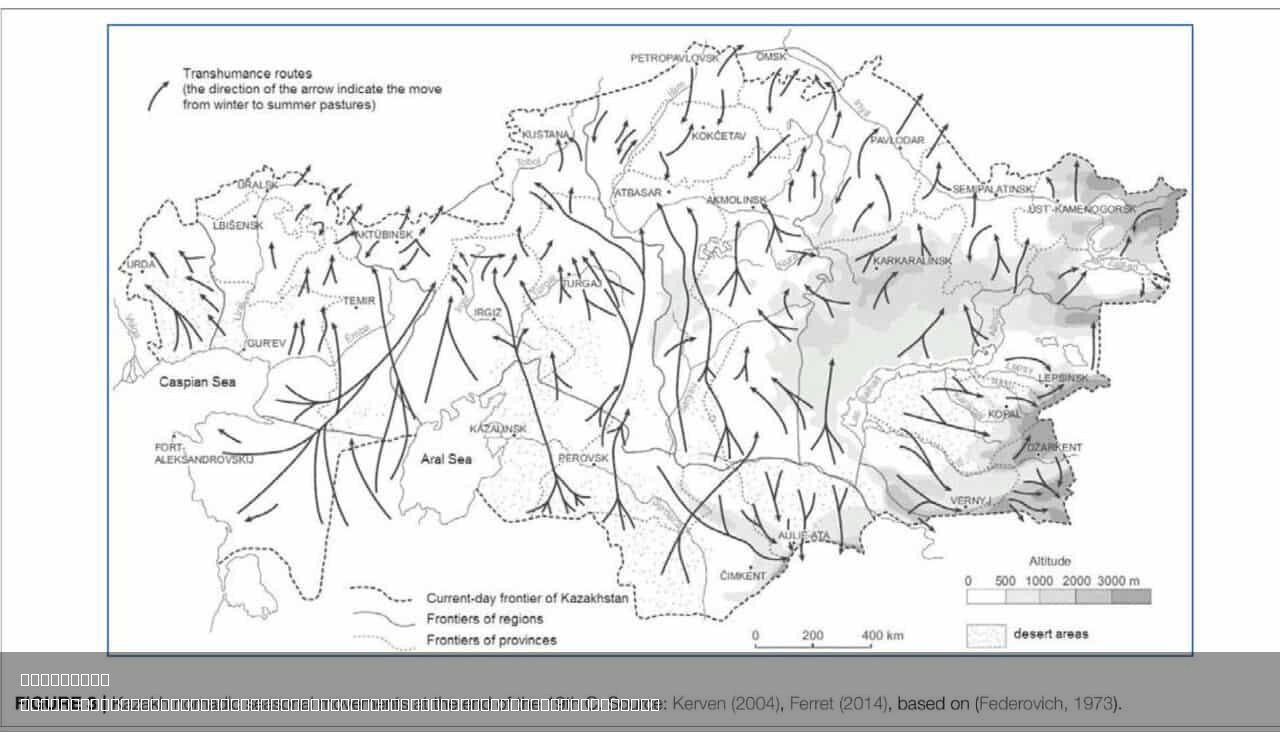Kazakh Nomadic Seasonal Movements Map


Alex Cartwright
Senior Cartographer & GIS Specialist
Alex Cartwright is a renowned cartographer and geographic information systems specialist with over 15 years of experience in spatial analysis and data...
Geographic Analysis
What This Map Shows
The "Kazakh Nomadic Seasonal Movements Map" provides a detailed visualization of the migratory patterns of Kazakh nomads at the end of the 19th century. This map illustrates the seasonal routes taken by these nomadic groups as they moved in search of pasture for their livestock across the vast steppes of Central Asia. It captures not only the geographical routes but also highlights the significance of environmental factors, social structures, and cultural practices that influenced these movements.
Deep Dive into Nomadic Lifestyle and Seasonal Movements
Kazakh nomads have a rich heritage that revolves around a semi-nomadic lifestyle, deeply rooted in their relationship with the land and their livestock. Traditionally, these groups relied on herding sheep, horses, camels, and goats, which dictated their seasonal movements. Interestingly, the nomads followed a cyclical pattern, migrating from summer pastures in the mountains to winter pastures in the valleys. This system of seasonal migration is known as transhumance.
In the late 19th century, the Kazakh nomads were primarily divided into three main groups based on their migratory patterns: the Great Horde, the Middle Horde, and the Little Horde. Each group had distinct routes influenced by geography, climate, and available resources. For instance, the Great Horde’s routes were often longer due to the expansive territory they covered, which stretched across present-day Kazakhstan and into parts of Russia.
The map indicates key features such as rivers, mountains, and grasslands, which were critical in determining migration routes. The Ili River, for example, served as a vital water source and a landmark for navigation. Seasonal changes prompted shifts in pasture availability, which nomads had to adapt to. During the summer months, herders moved towards the mountainous regions where lush grass was plentiful, while in winter, they retreated to lower altitudes where the climate was milder.
Cultural practices also played a significant role in these migrations. The Kazakhs have a tradition of communal living and shared resources, which fostered cooperation among different clans during their seasonal movements. They would often gather for festivals and celebrations at key points along their migratory routes, reinforcing social ties and cultural identity.
Regional Analysis
Breaking down the map reveals fascinating insights into the lifestyle of Kazakh nomads across different regions. For instance, in the eastern part of Kazakhstan, near the Altai Mountains, nomads experienced a shorter migration distance due to the richness of the pastures. In contrast, in the western steppes, nomads faced harsher climatic conditions and thus had to travel further to find suitable grazing grounds.
Moreover, the geographical features of these regions significantly influenced their seasonal movements. The presence of large mountain ranges provided shelter and abundant resources during the summer, while the vast plains offered expansive grazing land during the autumn and winter months. The map also shows the historical routes taken by these nomads, which have been passed down through generations and are still relevant to contemporary nomadic practices.
Significance and Impact
Understanding the seasonal movements of Kazakh nomads at the end of the 19th century is crucial for several reasons. Firstly, it sheds light on the adaptability and resilience of nomadic cultures in the face of environmental challenges. The ability to navigate vast landscapes and utilize seasonal resources highlights the deep knowledge these communities possess about their environment.
Moreover, this historical context is essential in understanding the modern implications of land use and rights in Kazakhstan today. As agricultural practices evolve and urbanization rises, many nomadic routes have been disrupted, resulting in a conflict between traditional lifestyles and modern development. This map serves as a reminder of the importance of preserving cultural heritage and recognizing the role of nomadic lifestyles in today’s global discourse on sustainability and land use.
In conclusion, the Kazakh nomadic seasonal movements map is not just a representation of routes on a geographical plane; it encapsulates a way of life that has thrived for centuries, showcasing the intricate relationship between humans and their environment. As we look to the future, there is much to learn from these traditional practices that can inform contemporary approaches to sustainability and community living.
Visualization Details
- Published
- August 4, 2025
- Views
- 134
Comments
Loading comments...